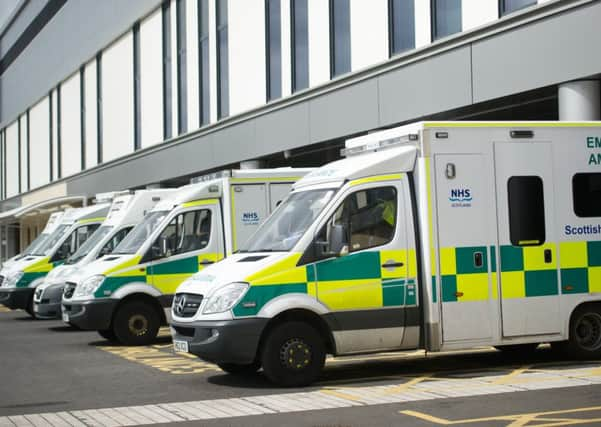Scots paramedics banned from 2,800 homes without police escort


There has been a six-fold increase in ‘red flagged’ addresses across Scotland in 2015, which means they are deemed too dangerous for paramedics to enter without police back-up,
Ambulance staff can flag up the addresses to the control room where they have been attacked or threatened, so call handlers can notify crews for future calls.
Advertisement
Hide AdAdvertisement
Hide AdThe number of no-go zones has shot up by 600 per cent since 2012 when there were 400 addresses, according to freedom of information statistics.
Conservative health spokesman Jackson Carlaw said: “Front-line ambulance staff do an incredibly important job and they have the right to go about their normal duties without fear of being attacked.
“When someone is convicted of attacking a paramedic, the punishment should be severe enough to make it plainly clear that this will not be tolerated.
“At a time when budgets are constrained, we cannot afford to have ambulances waiting outside no-go addresses. This can also stop other crews from attending other life-threatening emergencies.
“It’s not the first time Scottish Conservatives have raised this but having done so it is surely inexcusable for the SNP to have sat back and allowed the position to deteriorate further while continually boasting of its records on health and crime levels.
“Violence should not be tolerated and the SNP government need to be looking at cracking down on those who attack our front-line emergency workers.”
Greater Glasgow recorded the highest number of no-go addresses this year at 808, compared to 125 in 2012, while Lothian recorded 470 unsafe addresses compared to just 86 three years previously.
Lanarkshire recorded 295 addresses unsafe this year, but only 34 in 2012 and Ayrshire & Arran had 285 no-go addresses this year but only 22 three years ago.
Advertisement
Hide AdAdvertisement
Hide AdAmbulance staff are “at their wits end” over these sorts of calls, which are diverting valuable resources from elsewhere, said Mick Conroy, senior organiser GMB Scotland.
He said: “These attacks are clearly on the increase.
“A lot of the time we turn up at these addresses for people who are abusing the system. We get there and see there is nothing wrong but then when you say that the person might turn violent or their family and friends might turn violent.”
He described an incident where paramedics were attacked after refusing to pick up a man who was too drunk to get a taxi.
“We turn up and see it is a social matter, rather than a medical matter, but so often that is not what people want to hear,” he said.
“This is what staff have to put up with day in, day out.”
He claimed around 90 per cent of calls the service deals with were drink-related, and alcohol was a consistent factor in attacks on paramedics.
A spokesman for the Scottish Ambulance Service said: “The safety of ambulance staff is paramount, which is why the Service takes appropriate measures to protect them.
“As one of a number of protective measures, individual addresses - not streets or postcode areas - where there have been previous incidents of violence or threatening behaviour towards staff are flagged in control rooms.
“This means that if a 999 call comes in from a flagged address, dispatchers can identify that staff may be at risk and request additional police support.
Advertisement
Hide AdAdvertisement
Hide Ad“Ambulance crews are given training in management of aggression and how to undertake a full risk assessment on arrival at scene to establish if there is any potential danger.
“If any crews feel that their safety may be compromised, they are instructed to hold nearby the scene and await support from the police, or additional ambulance crews.
“Every year, ambulance crews report incidents of physical assault, ranging from pushing and punching to spitting and attack with a variety of weapons. “They deserve more respect for their dedication to patient care, often provided in the most challenging of situations. In most of these incidents alcohol is a key factor in the aggressive behaviour of patients.”